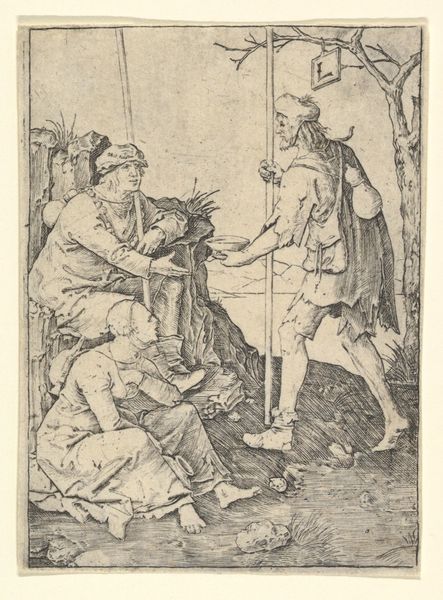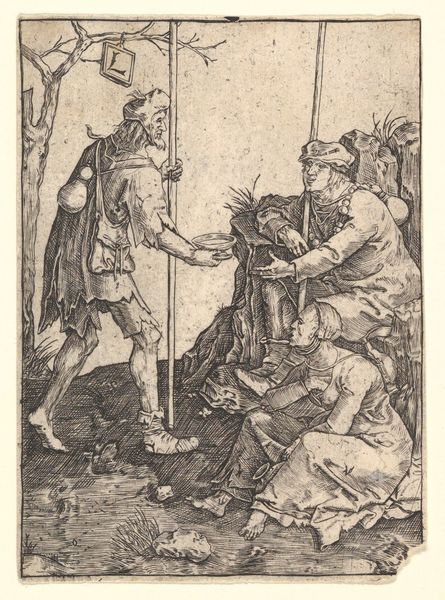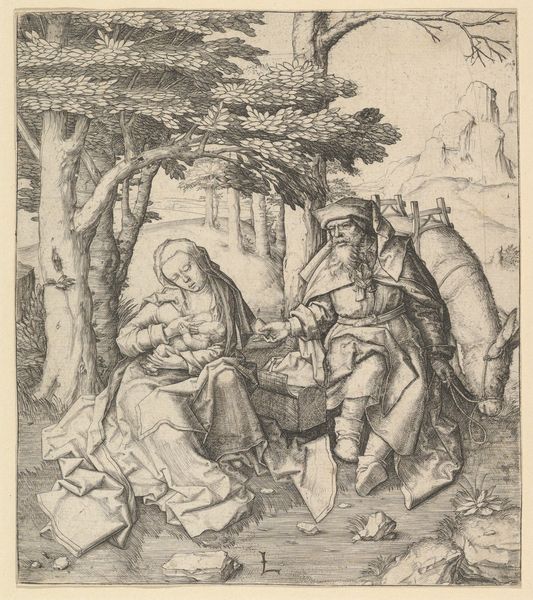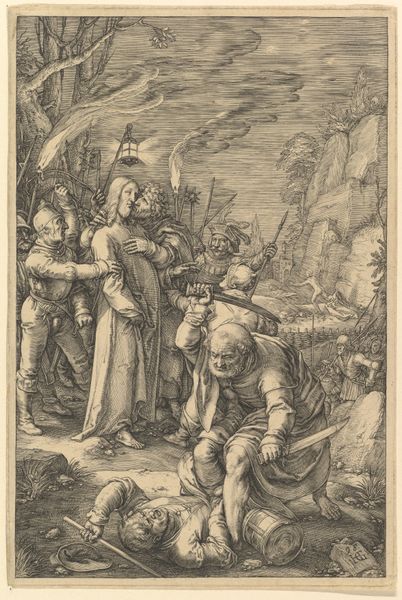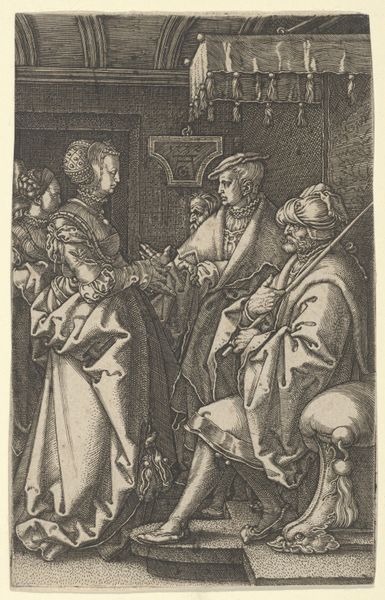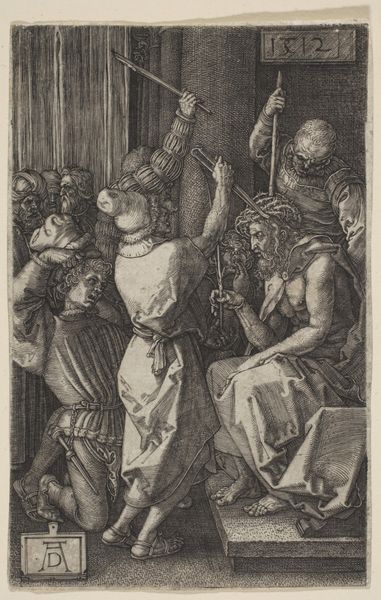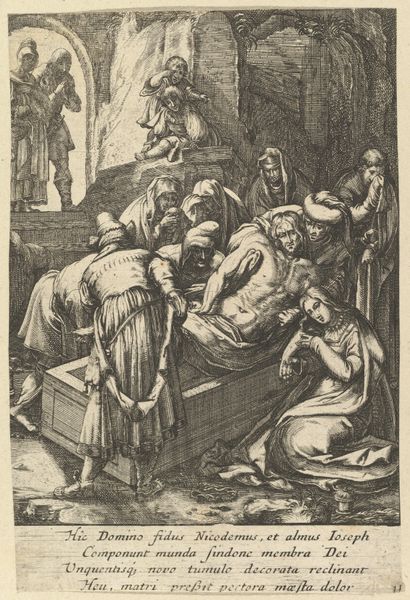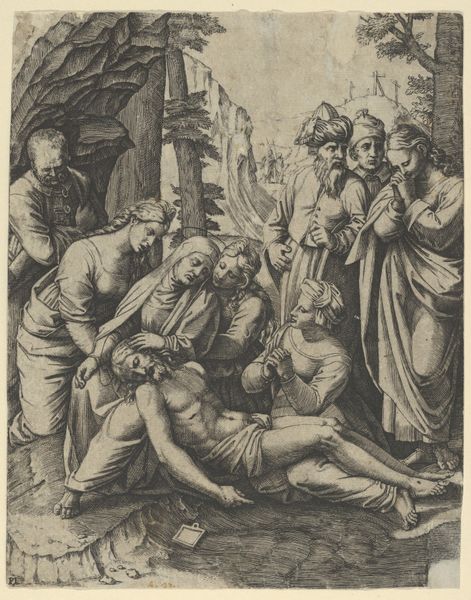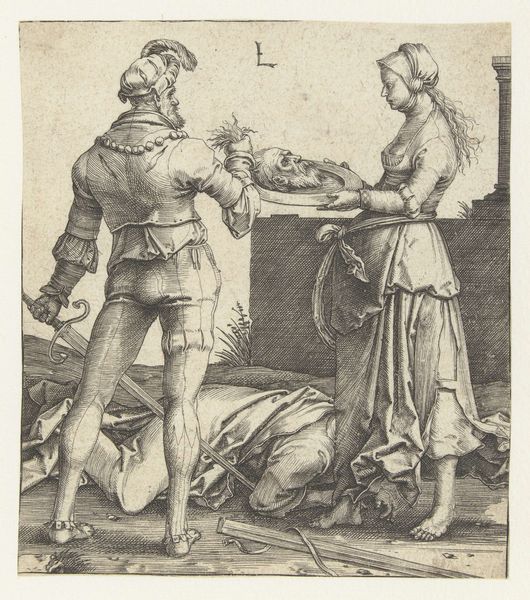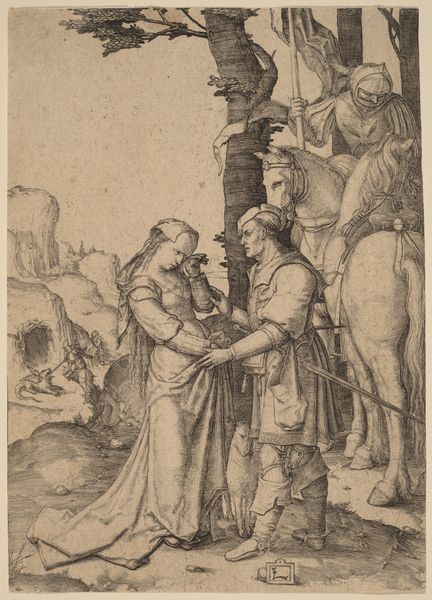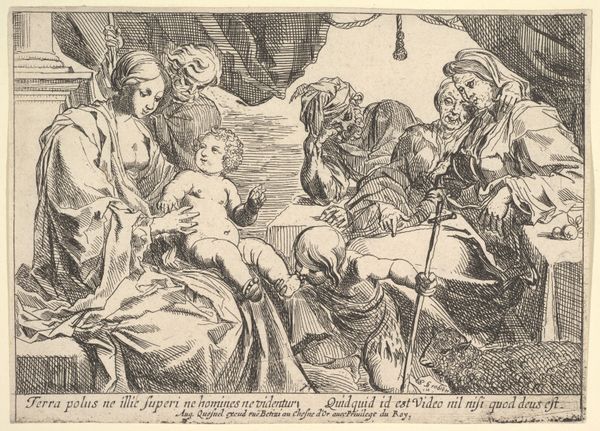
print, etching
#
narrative-art
# print
#
etching
#
landscape
#
figuration
#
genre-painting
#
northern-renaissance
#
realism
Copyright: National Gallery of Art: CC0 1.0
Curator: This is Lucas van Leyden’s "The Beggars," an etching dating from around 1510. Editor: It’s… unsettling. The level of detail is remarkable, but there’s a rawness to it. The figures seem both vulnerable and… cunning. Curator: Van Leyden was working within a burgeoning print market, which made his art accessible to a wider audience. He frequently engaged with scenes of everyday life. It’s worth thinking about who the images spoke to and what expectations of the poor existed. What biases? Who commissioned it and why? Editor: Exactly! Because there's a palpable tension here, especially regarding the disabled man holding out the bowl; the etched lines feel sharp. It makes me wonder what statement van Leyden was trying to make about social roles, about privilege, power, and precarity in that moment of social upheaval, following plagues and famine, in the shift to Renaissance ideals. Was it critique, was it condemnation? What moral position is he staging for the audience, what contemporary viewers today might recognize themselves in? Curator: That "L" dangling on the tree—his signature I suspect—but its presence almost mocks the scene; like he is labeling people or brands them by his vision of moral judgement. It brings the contemporary term "ableism" to my mind, but that might be an anachronistic reading of early 16th-century society... Editor: Maybe, but isn’t all interpretation inevitably filtered through our present? We look at his choice of figuration. Their bodies are realistically rendered, marked by poverty. The man on the right has a walking stick. Is it commentary, or mere observation? Or worse still, entertainment for those better off? Curator: The clothing choices say something too. The two seated beggars, even in tatters, seem to wear garb that might indicate former wealth, which could further imply moral failing on their part in the eyes of some audiences. Editor: It seems Van Leyden aimed for more than just representing figures; I feel a sense of lived experience embedded in each line, almost hyper-real in effect, despite its actual historical remove from me. Curator: And perhaps our role isn’t to definitively label it one way or the other, but to hold those questions. To allow the work to sit uncomfortably with us, pushing us to think about who gets seen, how, and why. Editor: Precisely. A disquieting piece to contemplate as we move into our current era’s social politics. Thank you.
Comments
No comments
Be the first to comment and join the conversation on the ultimate creative platform.
